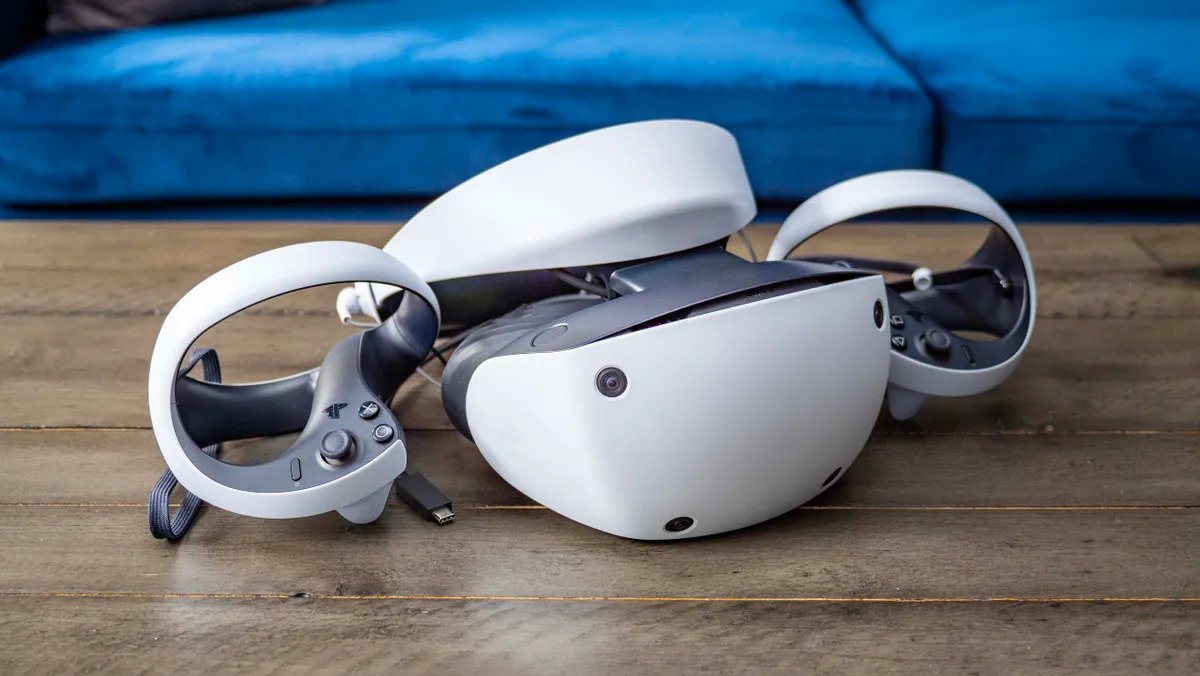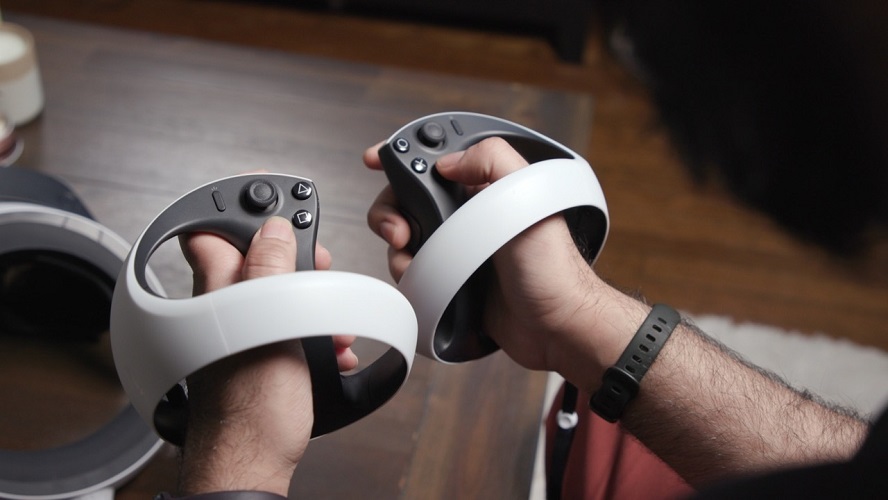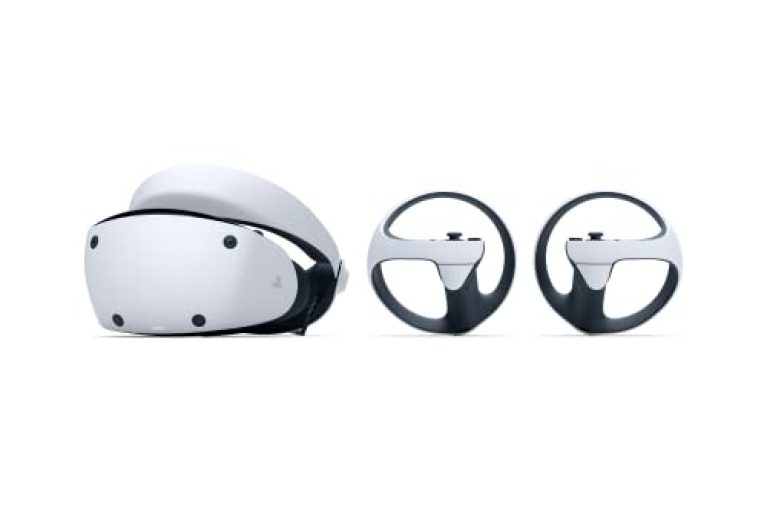PSVR 2 Review
- PlayStation VR2 Sense technology: Eye tracking. Headset feedback. 3D Audio. Highly intuitive controls – Haptic Feedback, Adaptive Triggers and Finger Touch Detection
- Cutting-edge performance
- 4K HDR visuals
- 110º field of view
- Advanced graphical rendering
Description
Prior to delving into all the aspects we admire about the PlayStation VR2, as well as addressing the few frustrations we’ve encountered, there’s an essential point we need to address.
In the realm of virtual reality, it’s important to note that the PSVR 2 exclusively supports games designed specifically for the PSVR 2 platform.

It’s worth mentioning that the device lacks compatibility with earlier PSVR titles. Unlike a $400 Meta Quest 2, you can’t simply connect it to a Windows PC and utilize it for SteamVR or Oculus games. While Sony has historically been open to collaborations with Valve or Meta to expand content libraries, they’ve taken a different route this time. Rather than leveraging existing partnerships, Sony has opted to create an entirely new ecosystem from the ground up.
“Call of the Mountain” stands as Sony’s premiere in-house offering for the launch of the PlayStation VR 2, showcasing the capabilities of the gaming giant’s robust new virtual reality headset.

From my perspective as Adi, I’d like to highlight that “Call of the Mountain” truly qualifies as a substantial and authentic gaming experience. While its initial moments might hint at the kind of lightly interactive theme park rides that characterized early VR endeavors, the game rapidly evolves beyond that. Players will soon find themselves immersed in battles against robotic dinosaurs and embarking on challenging mountain-climbing expeditions to aid Ryas, the central character, in confronting his mysterious past. This game skillfully adapts the enjoyable bow combat mechanics already celebrated in the main Horizon series, seamlessly transitioning them into motion-controlled archery through the utilization of the Sense controllers.
- Vivid, high-res OLED display
- Comfortable fit
- Powerful graphics potential
- Realistic vibrations
- Expensive
- Needs to be cabled to PS5
- Doesn’t work with old PSVR games
- Game library needs more exclusives
PlayStation VR2 – Design and Features
The PlayStation VR2 represents a clear and immediate advancement over its forerunner in all aspects. Interestingly, its physical design retains a striking resemblance. Much like its predecessor, it maintains an elegant black-and-white aesthetic that harmonizes with your PS5 console. The VR2 continues to employ an adjustable head strap design, distinct from the VR display itself. This approach effectively caters to a diverse array of head shapes and ensures that the display’s weight is distributed atop your head rather than on your facial area. The inclusion of a single-point adjustment mechanism on the rear of the head strap remains an excellent means of achieving an ideal and comfortable fit.
Interacting With the World

The controllers of the PSVR 2 are equally marked by innovation. While individuals familiar with the Quest 2 might find many elements quite familiar, these new controllers stand out dramatically when compared to the comparatively basic controls of the original PSVR.
Thanks to the tracking rings, the headset adeptly traces the positions of your hands, even with the sole sensors located within the headset. Positioned on the front, four cameras face outward, proficiently mapping your surroundings to establish a guardian zone or even provide a view of the room. This advancement is already a notable step up from the external cameras necessitated by the original PSVR.
This is more than enough to provide some flexibility in the VR games I played. The controllers also have a number of trigger buttons that are comfortably placed to feel like I’m really grabbing something when I open a door or pick up a torch. It’s obvious I’m not holding an apple, but I at least feel like I’m grabbing something, instead of just mashing a button.
Easy to set up
The setup and functionality present a striking resemblance to that of the Oculus Quest. The headset integrates four built-in cameras responsible for room tracking, eliminating the need for a TV-mounted camera, as seen in the previous PSVR hardware. The redesigned controllers possess the capability to track spatial movement and boast a comprehensive array of buttons, analog sticks, and triggers, aligning with the features found in other VR controllers. During setup, the PSVR 2 scans your environment, digitally mapping your space by outlining walls and obstacles using polygons—a technique reminiscent of AR headsets I’ve had the opportunity to test, like the Magic Leap. This process generates a proposed play area based on the digital model, which you can further customize to your liking. Importantly, this process offers a more streamlined experience compared to that of the Quest.
Does Playstation VR2 work for iphone?
PlayStation VR2 is primarily designed to work with the PlayStation gaming console, and its compatibility with iPhones is limited. It’s important to note that Sony does not offer official iPhone support for this VR headset but I have successfully connected my Playstatin VR2 to my iPhone using the Lightning to HDMI adapter, and it worked seamlessly. The only challenge was the limited visibility of your hands, but it’s quite remarkable for various activities like watching videos and more.








There are no reviews yet.